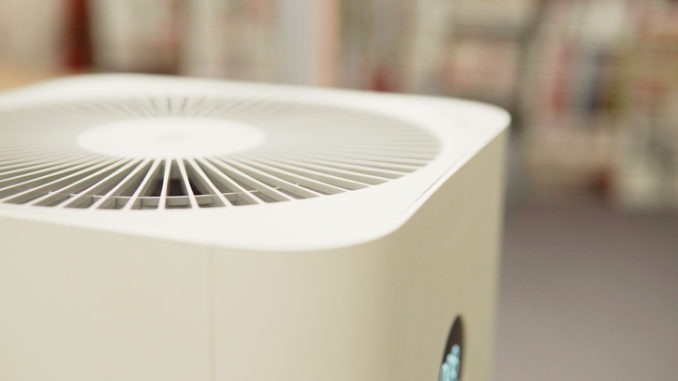
As reported by the Guardian, teachers accuse ministers of failing to act after union poll finds third of classrooms monitored have poor ventilation
A handful of monitors to measure air quality in the classrooms of a large Midlands secondary school was nowhere near enough to go round, but sufficient to detect a problem. “Readings in some rooms were well over the suggested clean air limit of 800ppm,” said one teacher. “We asked for action to be taken but nothing was done and now the monitors have been taken away.”
The teacher is not alone in his concern over poor air quality, which increases the risk of COVID infection, in schools. Aware of the link, the government sent out to schools in England 350,000 monitors to check the quantity of CO2 in the air, measured in ppm (parts per million), mainly from exhaled breath. But it is providing only 8,000 air purifiers for classrooms.
Now a survey by the National Association of Head Teachers (NAHT) suggests that the Department for Education may have underestimated the demand. Of the nine in 10 schools that received the monitors, more than a third – 34% – found classrooms with consistently poor levels of ventilation, the survey found. Of those, more than half – 53% – said even after taking action they continued to have rooms with a red reading, denoting consistently poor air quality.
It also showed that only a tiny two per cent of schools are using air filters and cleaning devices provided by the government. A further eight per cent are using ones they bought themselves. Three-quarters of the 1,625 schools in the survey said they could not afford such devices – the government recommends two filters suitable for a classroom, priced at £425 or £1,170 a unit, plus the cost of filters.
Paul Whiteman, the NAHT’s general secretary, says the survey suggests 8,000 air filters are unlikely to satisfy demand from the more than a quarter of a million classrooms in England. “We will encourage government to monitor demand and to make more available as required, to ensure all schools that need one, get one. Adequate ventilation in classrooms should not be limited to first come, first served,” he said.
Nadhim Zahawi, the education secretary, told the Commons this month that “the majority of schools didn’t report any issues with the atmosphere in the classroom”. The government had ordered 8,000 purifiers because the feedback suggested that was all that was needed. To provide them for all schools would be a waste of taxpayers’ money, he said.
However, Munira Wilson, the Liberal Democrat education spokesperson, says schools are missing out because the DfE has set the bar too high. Only those with rooms consistently above 1500 ppm of CO2 could get free filters, nearly twice 800 ppm, the widely agreed safe level.
“The government has completely failed teachers, pupils and parents alike with their botched air purifier scheme,” she said. “Not only do their own criteria fail to keep most classrooms safe, the earliest a school can access equipment is next month. This snail’s pace is frankly unacceptable.”
“Conservative ministers are spending twice as much on a royal yacht than it would cost to provide an air purifier for every classroom,” she added. “They are making schools compete for equipment to help keep their pupils and staff members safe.”
In Bradford a study of air quality in 30 primary schools is seeking to identify the most efficient way of achieving clean air in the classroom and the link between CO2 levels and COVID transmission rates. One group in the study uses the conventional method of opening windows, the next also uses air filters and the third group has ultra-violet lamps that kill the virus.
Catherine Noakes, professor of environmental engineering at the University of Leeds, one of the researchers, says 800 ppm or 1500 ppm should not be seen as hard measures. “If your levels are 800 or below then that’s healthy and you don’t need to do anything. If levels are routinely above 1500 ppm then your ventilation is poor, you have a problem and you need to do something about it,” she says. “Between 800 and 1500 a lot of other factors have to be taken into account. You could get a school routinely getting 900 because of variations caused, for example, by the position of the sensors, or the number of people in the room.”
The Department for Education said its statistics showed 99% of state-funded education settings had received a CO2 monitor.
A spokesperson added: “Air cleaning units are not needed in the vast majority of classrooms – only where there is poor ventilation that cannot be easily improved. Based on feedback from schools that there are only a small number of cases where good ventilation is not possible, we are supplying up to 8,000 air cleaning units from next week.”
Schools, nurseries and colleges have until 17 January to apply for 7,000 of the air cleaning units. Special schools and alternative provision settings have already been offered 1,000 units.
“Together with mass testing, bringing in supply staff and the hard work of schools and teachers, we are confident that our measures will maximise classroom time for students,” the spokesperson said.




Be the first to comment